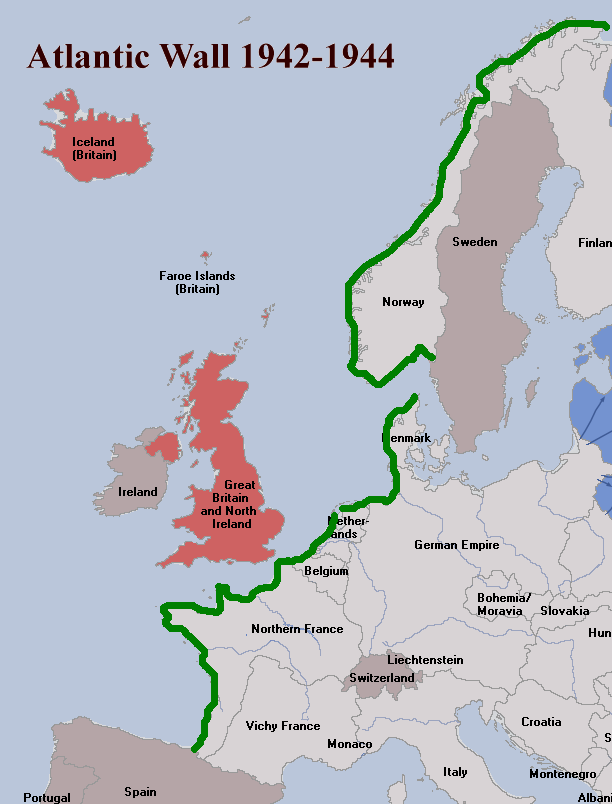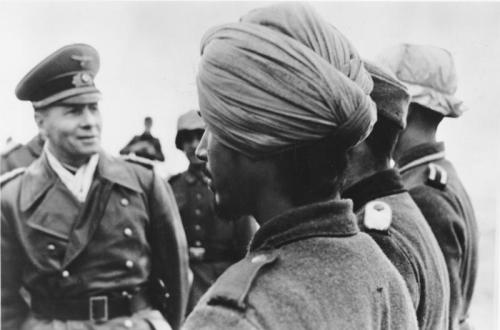The Non-German defenders of the Atlantic Wall,In 1942 Germany began construction of the Atlantic Wal
The Non-German defenders of the Atlantic Wall,In 1942 Germany began construction of the Atlantic Wall in order to defends its World War II territorial conquests from a possible Allied amphibious invasion. The wall consisted of various fortifications, mines, tank barriers, mortars, artillery pieces, machine gun nests, pillboxes, and bunkers, and was designed to fend off any beach landing. On June 6th, 1944 Allied forces landed on the beaches of Normandy and quickly overran these defenses. Thousands of German soldiers were captured, but surprisingly still many of those capture were not German at all.At the very beginning of the war Germany upheld its Nazi belief in pure Arianism. However as the war dragged, that sentiment quickly gave way as casualties grew and manpower shortages worsened. Both the Wehrmacht and the SS began to accept foreign volunteers. Many of these foreign troops were sent to man the defenses of the Atlantic Wall. These soldiers came from all over Europe, and even the Middle East and Asia. One notable extreme was the Indian Legion, also known as the Azad Regiment, which consisted of volunteers from India who believed that a German victory would secure India’s independence from the British Empire. The reasons for volunteering were varied, some political, many as a necessity for survival. By far the most numerous foreign volunteers were those from the Soviet Union. Some volunteered because they were disgruntled with Soviet rule, for example the Russian Liberation Army, which joined the Wehrmacht to oppose communism in Russia. However most volunteered as an alternative to spending the rest of the war as a POW. Soviet POW’s were treated terribly during the war, with 3.3 to 3.5 million dying of starvation, disease, exhaustion, and overall maltreatment. For many Soviet POW’s, service with the German Army was the only way to avoid such a horrible fate. Typically, these troops were often not very reliable in combat. Understandably, they were not very motivated to sacrifice life and limb for their conquerors. In some cases they proved to by a grave liability, such as the case of a battalion of soldiers from Georgia which manned the Atlantic Wall defenses on the Dutch island of Texel, who in 1945 openly rebelled against the Germans.As well as many thousand foreign volunteers, there were also many thousand foreign conscripts who were forcibly made to serve in the German Army. By far the most interesting extreme in this instance were a group of Koreans who were captured by American forces during the D-Day invasion. For three decades Japan had occupied Korea, and the men were forcibly conscripted into the Japanese Imperial Army. In 1939 Japan attempted to invade the Soviet Union through Mongolia, but were badly beaten at the Battle of Khalkhin Gol. The Koreans were captured and sent to the gulags, but with the German invasion of the Soviet Union, were then forced to join the Red Army and fight on the Eastern Front. They were then captured by the Germans, conscripted into the German Army, and forced to man the defenses of the Atlantic Wall at Normandy.By far the most numerous conscripts were Polish. Before World War I many parts of Poland had been a part of Prussia, and later the German Empire. When Germany re-conquered these territories they considered many of the people living there to be ethnic Germans. As such, they were considered full citizens of the Reich and thus were subject to German draft laws. Many still believed themselves to be German and thus were willing to fight for the German cause, however many spoke Polish, had adopted Polish customs, and believed themselves to be Poles. Regardless, refusing to obey the draft laws could result in serious consequences, not only for the individual but his family as well. Some 500,000 Poles were conscripted into the Wehrmacht, with many serving on the Atlantic Wall. Like the Soviets, the Polish also were not the best soldiers as they were often unwilling to fight for their taskmasters. Around 85,000 would defect to the Free Polish Forces in France. In addition to Polish Troops, a number of Czechs considered ethnic Germans would be conscripted as well.Overall, one in six defenders of the Atlantic Wall were not German. Nothing demonstrates the diversity of these defenders more than the photo below of a group Wehrmacht soldiers captured during D-DayFront Row (from left to right): a Yugoslav; an Italian; a Turk; a PoleBack Row (from left to right): a German; a Czech; a Russian who was forced into the army when the Nazis occupied his town; and a Mongolian. -- source link
Tumblr Blog : peashooter85.tumblr.com
#history#wwii#d-day#atlantic wall#wehrmacht



